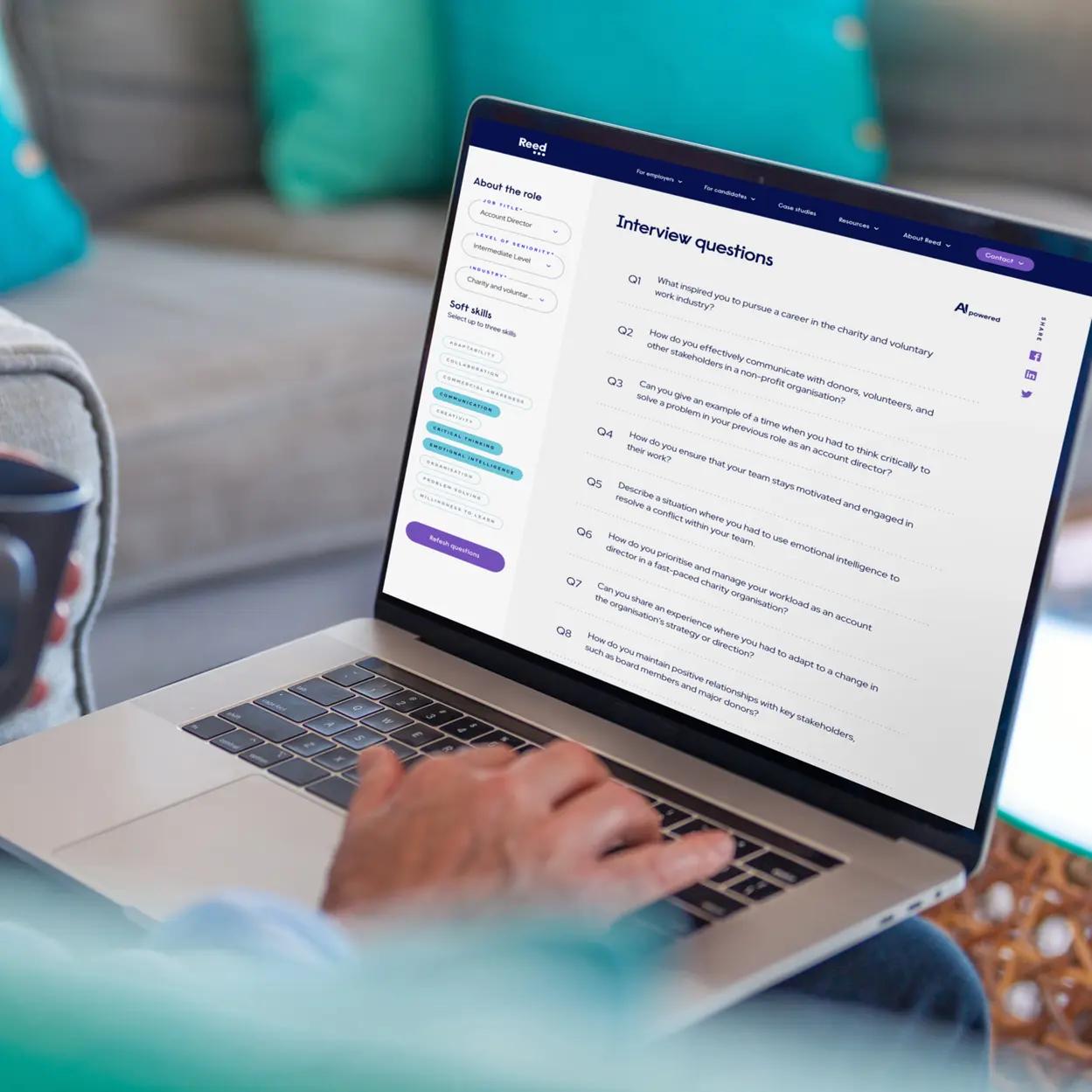The world of work continues to change – how fast a pace is debatable, but as tech continues to evolve, so too do job roles and the workloads associated with them.
A. As a former journalism student, journalist, PR and marketer, and now content marketer, AI sometimes feels like a threat to my whole career. Why? Because sometimes I feel it knows so much more than I do.
B. As a former journalism student, PR professional, and marketer, I feel threatened by AI because it increasingly automates content creation, media monitoring, and targeted marketing strategies, potentially reducing the demand for human expertise in these fields.
Look at the two statements above, which do you feel was written by AI? And which was written by me?
If you chose option B as the AI-generated content, you were correct. I mean, it doesn’t even know me and it can say how I am feeling about a situation in so much more detail.
Statement aside, I am enthralled with the possibilities AI represents in my role. I can work twice as fast, come up with more ideas for content than I know what to do with, at the click of a button. I can edit videos, write TikTok scripts, and even ask AI to respond to emails for me. Enough about me, let’s take a closer look at how AI is likely to affect you.
As the UK positions itself as a global hub for innovation, it’s worth asking: are we embracing AI in a way that enhances our creativity - or risking a future of uniformity and automation over imagination?
What is AI and how are some UK businesses currently using it?
Artificial intelligence comes in many forms, but it’s commonly grouped into three broad categories: narrow AI, general AI, and superintelligent AI. While the latter two are still largely theoretical, narrow AI - also known as ‘weak AI’ - is already embedded in everyday business operations across the UK.
Narrow AI refers to systems designed to perform specific tasks, such as analysing data, recognising images, transcribing speech, or recommending content. These systems don’t possess consciousness or understanding, but they can carry out their assigned functions with accuracy and speed. In the UK, narrow AI is widely used across sectors. Retailers like Tesco and ASOS are leveraging AI-powered recommendation engines to personalise customer experiences. Financial firms use machine learning models to detect fraud and assess credit risk. In healthcare, NHS trusts are experimenting with AI tools to streamline diagnostics, especially in radiology and pathology. Even in HR and recruitment, companies are deploying narrow AI to screen CVs and identify promising candidates more efficiently.
The next category, general AI, refers to a hypothetical level of intelligence where a machine could understand, learn, and apply knowledge across a broad range of tasks like a human. This form of AI does not yet exist, though major research efforts are underway to explore its potential. It’s the kind of AI that could move fluidly between fields, solve unfamiliar problems, and display reasoning and creativity in a way that goes beyond current capabilities. For now, businesses aren’t using general AI - but many are watching its development closely as it promises profound disruption, particularly in professional services, education, and across wider business strategies.
Lastly, superintelligent AI refers to a level of intelligence that would surpass even the most capable human minds. Often a subject of speculation in ethics and science fiction, it’s not on the horizon in practical business terms, but it does raise long-term questions around governance, control, and the role of us as humans. At present, it is narrow AI that’s shaping the way companies operate, from chatbots in customer service, to algorithmic trading in finance and predictive maintenance in manufacturing.
The challenge for leaders is not just adopting these tools but doing so in a way that supports long-term innovation, enhances human work, and avoids over-reliance on systems that, while powerful, are still limited by their design.
The pros of using AI for business
AI can be a powerful ally in the creative process. For marketing teams, tools like ChatGPT or Jasper can kick-start campaign ideas, generate copy, or A/B test messaging at scale. Designers are experimenting with AI-generated art to inspire new visual styles. And product teams use machine learning to predict customer preferences and prototype faster. When used well, AI arguably frees up time for us to focus on higher-value strategic tasks – allowing us to plan and complete those bigger tasks we never have time for.
Have you ever experienced writers block, needed inspiration, or ideas on how to do things differently? Well, AI can solve all those by boosting creativity. You can use it to spark ideas for pretty much anything, and the nature of AI also means it can provide data-based inspiration.
If you’re a smaller business with limited resources, access to creative tools will often come at an expense. Some AI tools are subscription based, but you can also produce a lot for free. Take for example Reed’s interview question generator - that allows you to create tailored interview questions for jobs you are hiring for in seconds. You have ChatGPT, Copy.ai, Grammarly, Designs AI, Canva’s Magic Design, Otter.ai, Midjourney and so many more.
Using AI can also enable rapid iteration, testing, and optimisation by allowing companies to analyse large volumes of data quickly, simulate different scenarios, and adjust strategies in real time – something that if manually done, can be very slow. This could be anything from testing the performance of website pages to rewriting content.
Diversity and inclusion continue to be high up on business agendas, and there is an argument growing that using AI can enhance inclusion in your company. How? Because AI generates ideas from a wide range of sources and perspectives; it helps to include viewpoints that may have been overlooked. It can do language translations which helps breakdown barriers and can also aid those with disabilities to contribute their ideas more effectively.
The downside of AI
I heard it the other day from a friend: “We let our team member go as my boss decided we can just do her job with AI”. This is an extreme case, but for many, a reality of what AI really means in the business world. And as AI develops, this frame of mind is likely to become more prominent – especially in smaller companies.
Another question arises from the repetitive use of the same models. If we are all using the same models trained on similar datasets, is the outputs of these models over time going to look and sound the same? It could end up churning out similar content, causing what could be referred to as a creative flattening. Because generative AI relies on existing patterns, it could lead to repetitive outputs – we could all end up having the same information on our websites, proposals, business plans etc.
If AI becomes a shortcut, it may mean future generations of creative professionals will have prominent skills gaps or skills that are underdeveloped. Examples of this could be seen in both hard and soft skills. People may not think they need to learn how to spell, use grammar correctly, or even collaborate with others.
Relying solely on the outputs of AI without human oversight may mean businesses miss out. Yes, AI has great ideas, but humans need to prompt the AI to produce the output. The results, while sufficient, often need tweaking. Therefore, just accepting the output that AI gives you could see businesses miss out on bolder, more disruptive innovations.
AI systems can perpetuate existing biases in data, limiting diversity in thought and output. The question is not whether AI is capable of creativity - but whether its application is thoughtful enough to complement, not replace, human imagination.
The future is co-creative
Innovation thrives not just on logic, but on risk-taking, lateral thinking, and emotional intelligence. These are human traits. AI, for all its brilliance, is not imaginative in the same way people are. It doesn’t experience culture, intuition, or instinct. It recombines and predicts, rather than invents in a truly novel way.
AI is, fundamentally, a tool. Whether it becomes a crutch or a catalyst depends entirely on the culture and leadership around it. Forward-thinking businesses won’t just ask what AI can do for them, but how it can elevate the work of their people. That means creating environments where experimentation is encouraged, where humans remain firmly in the loop, and where AI is viewed as a collaborator, not a competitor.
Leaders have a critical role to play in shaping this mindset. They need to ensure that their teams not only have access to AI tools, but the confidence and skills to use them. That means investing in human capabilities like creativity, emotional intelligence, storytelling, and ethical reasoning, alongside technological proficiency. It also means holding space for dissent, originality, and the kind of lateral thinking that doesn’t always emerge from a dataset.
There’s a final, perhaps overlooked, dimension here too. AI, if wielded thoughtfully, can actually open the door to more inclusive creativity. It can empower quieter voices, remove barriers to access, and offer smaller businesses the same firepower once reserved for large corporations. But that opportunity will only be realised if we use AI not to replace human input, but to expand who gets to contribute.
So, is AI stifling creativity across UK businesses? It doesn’t have to. In the right hands, it can be a force for bold new thinking. But if used without intention, or worse, as a substitute for human judgment, we risk trading originality for output. The future of innovation will not be man or machine. It will be forged in the space between the two, where technology enhances human imagination, rather than eclipses it.
If you are looking for a talented professional to join your team, or seeking a new employment opportunity yourself, get in touch with a specialist consultant today.




